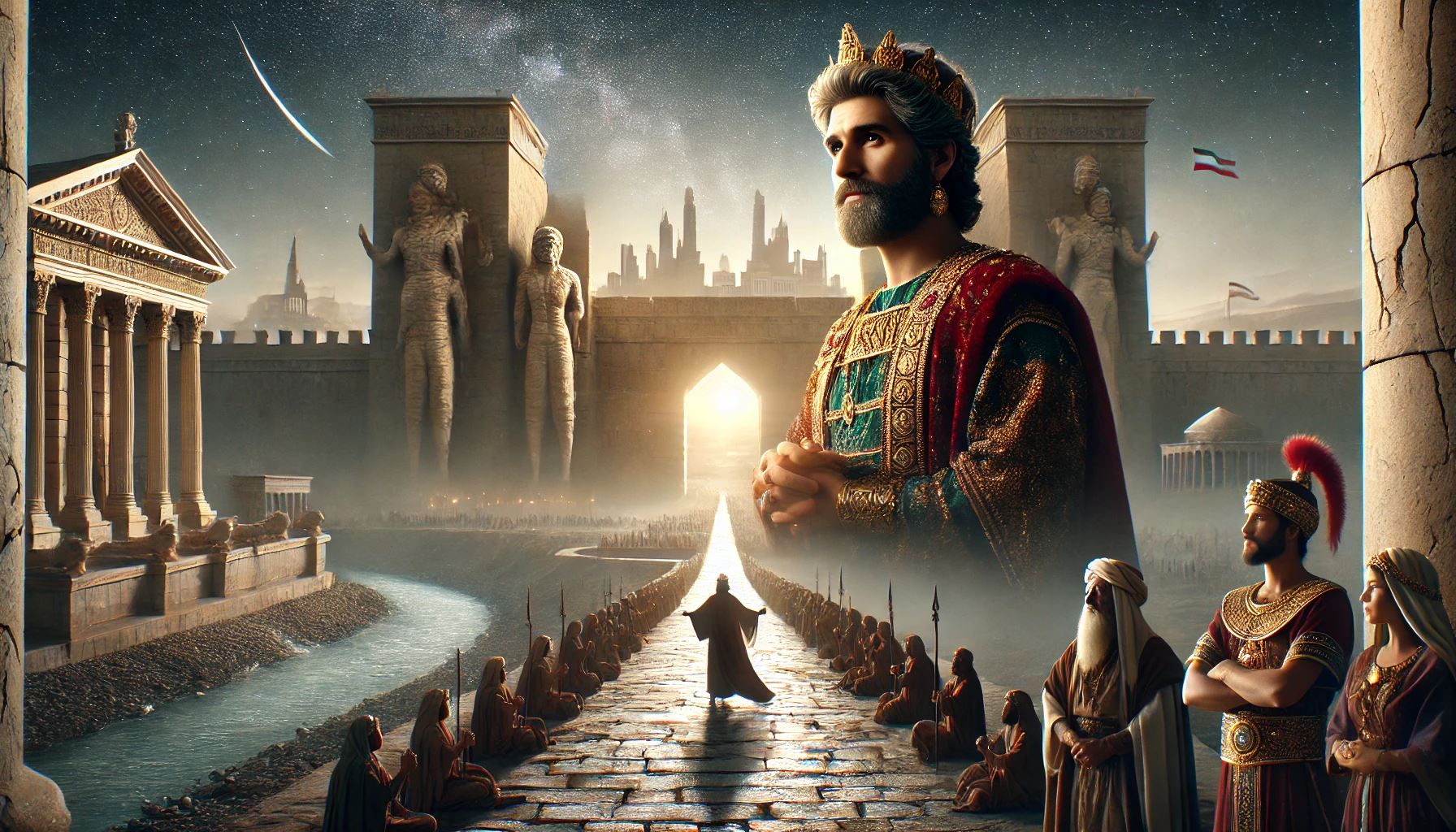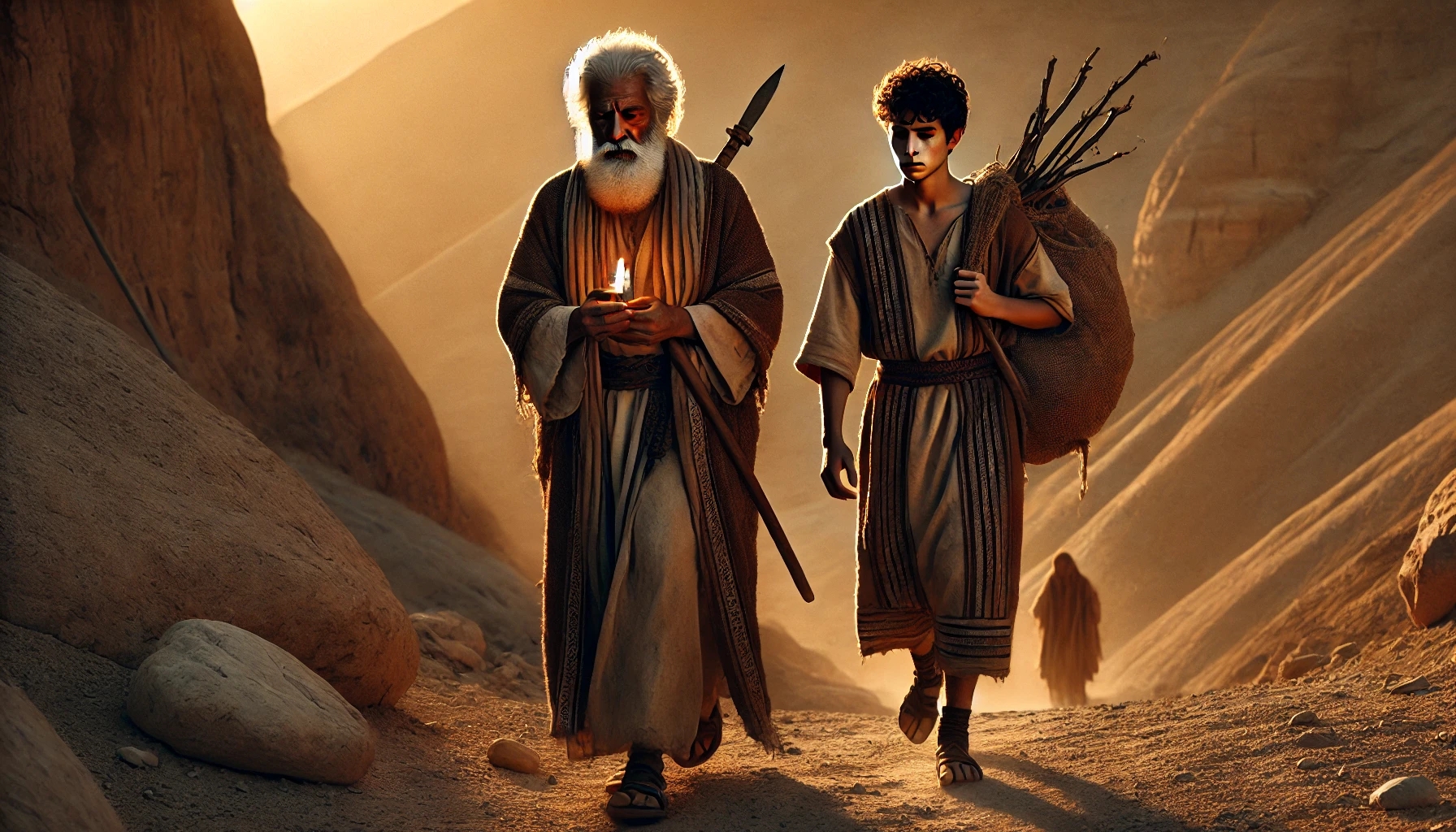Northern Luzon is buzzing with evangelism. Discover how AWR360° is spreading the everlasting gospel. Experience the mission in action. Learn more at https://awr.org. Watch the full report here: https://www.youtube.com/watch?v=QAaPGZVPlgk&t=1s #AWR360 #BroadcastToBaptism #AWRUpdates Source: https://www.youtube.com/shorts/fhmLOy3TCRQ
God First: Your Daily Prayer Meeting #1036
"If you believe, you will receive whatever you ask for in prayer" (Matthew 21:22, NIV).
Tag someone in need of prayer, and kindly share your prayer requests here:
https://wkf.ms/3DBuapQ Source: https://www.youtube.com/watch?v=f8O0_OKuZ1k
SATIRE: Walter Veith to Reveal Year of Second Coming at GC Session

ADVENTIST WORLD — The wait will soon be over for Walter Veith fans that need clarity on the approximate date of Christ’s second coming. The internet ministry personality promises to reveal the year at the upcoming General Conference (GC) Session. “We may not know the day or the hour but the year is not that […] Source: https://atoday.org/satire-walter-veith-to-reveal-year-of-second-coming-at-gc-session/
Lord, Teach Us to Pray (PART 3) | Jacob Wayd | Bible Study | June 25, 2025
What does it truly mean to pray in the name of Jesus? In Part 3 of this brief series, we uncover the seventh key principle of effective prayer. Source: https://www.youtube.com/watch?v=TpvpcZs9q4U
Lesson 13.Images of the End | 13.5 Cyrus, the Anointed | ALLUSIONS, IMAGES, SYMBOLS | LIVING FAITH


 Lesson 13: IMAGES OF THE END
Lesson 13: IMAGES OF THE END
 13.5 Cyrus, the Anointed
13.5 Cyrus, the Anointed
 Cyrus – A Pagan King as a Foreshadowing of the Redeemer
Cyrus – A Pagan King as a Foreshadowing of the Redeemer
………………………………………………………………….
 Introduction
Introduction
The story of Cyrus, the Persian king, is a fascinating chapter of divine providence. Though he was not an Israelite, God used him powerfully—not only to liberate His people but also as a prophetic image of something far greater: the second coming of Christ.
Cyrus does not represent human greatness or military triumph, but God’s sovereign plan—one that sometimes uses instruments we would never expect. The victory over Babylon through Cyrus was not just a historic moment, but a prophetic preview of the ultimate deliverance Christ will bring to His church.
………………………………………………………………….
 Bible Study – Cyrus: God’s Anointed and a Foreshadowing of Christ
Bible Study – Cyrus: God’s Anointed and a Foreshadowing of Christ
1. The Historical Cyrus – Who Was He?
Cyrus II, also known as Cyrus the Great, ruled from around 559–530 B.C. and founded the Persian Empire. His conquest of Babylon in 539 B.C. not only ended the reign of the Chaldeans but also marked the beginning of a new chapter for God’s people.
Key text: Isaiah 45:1–5
“Thus says the Lord to his anointed, to Cyrus… I have grasped him by his right hand… to subdue nations before him.”
What’s astonishing?
This prophecy comes from Isaiah’s time—over 150 years before Cyrus was born! God calls him “his anointed” (Heb. mashiach, like “Messiah”)—a title usually reserved for Israelite priests, kings, or for Christ Himself.
Why would God call a pagan king “His anointed”?
Because Cyrus was a tool of liberation in God’s hands—a type, a foreshadowing of the great Redeemer, Jesus Christ.
2. Divine Intervention – The Fall of Babylon
On the night of Daniel 5, while Belshazzar mocked God and used the sacred temple vessels, Persian troops entered under Babylon’s walls. They had diverted the Euphrates River—the city’s lifeline.
This was not a coincidence but the fulfillment of prophecy:
 Jeremiah 50:38
Jeremiah 50:38
“A drought upon her waters, that they may dry up!”
 Isaiah 44:27–28
Isaiah 44:27–28
“I say to the deep, ‘Be dry!’… I say of Cyrus, ‘He is my shepherd!’”
Cyrus didn’t destroy Babylon. He took it almost without a fight—in a single night—fulfilling God’s plan.
3. The Decree – Return and Rebuilding
 2 Chronicles 36:22–23
2 Chronicles 36:22–23 Ezra 1:1–4
Ezra 1:1–4
“Thus says Cyrus king of Persia: The Lord, the God of heaven, has given me all the kingdoms of the earth… and has charged me to build Him a house at Jerusalem.”
This decree allowed:
-
The return of exiles to Judah
-
The rebuilding of the Temple
-
And marked the final stage leading to the coming of the Messiah
Connection to Christ:
No return → No temple
No temple → No priestly sacrifice
No sacrifice → No preparation for the Messiah
Cyrus’ decree is therefore a historical milestone in God’s plan of salvation.
4. Typology – Cyrus and Christ: Parallels
| Cyrus | Christ |
|---|---|
| Anointed (Isa. 45:1) | The true Anointed One (Luke 4:18) |
| Came from the East (Isa. 41:2) | Will come from the East (Matt. 24:27) |
| Conquered Babylon | Will destroy spiritual Babylon (Rev. 18) |
| Gave freedom | Frees from sin and death |
| Allowed Temple rebuilding | Builds a spiritual temple (1 Cor. 3:16) |
These parallels show that God sets types in history to foreshadow the coming of the Messiah.
5. God’s Sovereignty Over Kings
 Daniel 2:21
Daniel 2:21
“He removes kings and sets up kings.”
 Proverbs 21:1
Proverbs 21:1
“The king’s heart is a stream of water in the hand of the Lord; He turns it wherever He will.”
The fall of Babylon, Cyrus’ rise, and Israel’s liberation all show that God is Lord over history, politics, and powers.
He can:
-
Use governments that don’t know Him
-
Use pagans for holy purposes
-
Direct history to build His kingdom
6. Prophetic Continuity – From Cyrus to Jesus
Originally, the Hebrew Bible ended with 2 Chronicles 36:23—Cyrus’ decree.
The next page in history? Matthew 1:1 – The genealogy of Jesus
Matthew 1:1 – The genealogy of Jesus
“This is the book of the genealogy of Jesus Christ…”
Not a coincidence: Cyrus calls for return
Cyrus calls for return Jesus calls for homecoming to God’s Kingdom
Jesus calls for homecoming to God’s Kingdom
7. Application – What Does This Teach Us Today?
 God’s plans will be fulfilled – even if they take time.
God’s plans will be fulfilled – even if they take time.
The prophecy of Cyrus came 150 years before his birth—and it was fulfilled. Christ’s return is just as certain.
 God uses the unexpected.
God uses the unexpected.
Don’t assume only Christians can be God’s instruments. He can even use enemies to accomplish His will.
 The door to return is open.
The door to return is open.
Cyrus opened the door—but not everyone walked through. Today, Jesus’ invitation stands: “Come to me, all who are weary…” (Matt. 11:28) Yet not all respond.
 It takes courage to return.
It takes courage to return.
Many Jews stayed in Babylon—out of comfort, fear, or apathy. God’s call is not always easy—but always freeing.
 Conclusion: Cyrus – A Shadow of a Greater King
Conclusion: Cyrus – A Shadow of a Greater King
Cyrus was great—but Christ is greater.
Cyrus freed Israel—Christ frees the world.
Cyrus led to Jerusalem—Christ leads to the New Jerusalem.
God uses history like a canvas. Cyrus is one of the brushstrokes. Christ is the masterpiece.
………………………………………………………………….
 Answers to the Questions
Answers to the Questions
 Question 1: How is Cyrus’ story similar to Nebuchadnezzar’s?
Question 1: How is Cyrus’ story similar to Nebuchadnezzar’s?
Similarities:
-
Both were pagan kings called by God
-
Both had to learn their power came from God
-
Both impacted Israel—Nebuchadnezzar in judgment, Cyrus in restoration
Differences:
-
Nebuchadnezzar was a tool of judgment; Cyrus of restoration
-
Nebuchadnezzar learned through humiliation; Cyrus seemed open from the start
 Question 2: What is the significance of the decree?
Question 2: What is the significance of the decree?
Cyrus’ decree began the return—the turning point after 70 years of exile. It wasn’t just political, but divine. It shows that even pagan rulers must submit to God’s will.
 Question 3: How did it affect the first coming of Jesus centuries later?
Question 3: How did it affect the first coming of Jesus centuries later?
The decree allowed the Jews to return, rebuild Jerusalem and the Temple. All of this was necessary for the messianic promises to be fulfilled—Jesus came to that city, to that Temple, to that people. Without the decree—no birth in Bethlehem, no ministry in Galilee, no cross in Jerusalem.
………………………………………………………………….
 Spiritual Principles
Spiritual Principles
-
God uses whomever He chooses—even beyond the visible church
-
His providence works through history—no empire or dictator can stop God’s plan
-
Salvation often begins quietly—a royal decree, a return from exile, a faithful God
………………………………………………………………….
 Application for Daily Life
Application for Daily Life
-
Don’t judge God’s tools too quickly—He may be using someone unexpected
-
Whatever you’re facing, God already has a “Cyrus” on the way—someone or something to start your freedom
-
Ask yourself: Would I return if God opened the door like He did through Cyrus? Or have I grown too comfortable in my “Babylon”?
………………………………………………………………….
 Conclusion
Conclusion
Cyrus’ story is no outdated tale—it’s a mirror for our lives today. In a world full of spiritual captivity, God calls us home. Sometimes through sermons, sometimes through crises, sometimes even through strangers.
But one truth remains: God’s plans are greater than our vision. Those who are awake will see His fingerprints in the turns of history.
………………………………………………………………….
 Thought of the Day
Thought of the Day
“God doesn’t need perfect tools—only open hearts.”
Like Cyrus, God will still send His anointed ones today—not to destroy, but to deliver. Ask yourself: Am I ready to go when He calls?
………………………………………………………………….
 Illustration – “The CEO and the Sky Over Babylon”
Illustration – “The CEO and the Sky Over Babylon”
The city was called Nova Urbis. A megametropolis in the heart of Europe. A digital power center led by a man known in the media only as “D.C.”—Dominic Cyrus, CEO of the global tech corporation Euphratech.
Little was known of his background. Only that he feared no system. When Euphratech acquired Babylon Systems—the last independent AI platform—the world changed overnight.
Amid the victory celebrations, D.C. released an unexpected message: a “Decree of Freedom.” In a video statement, he said:
“I’ve seen enough of control, deception, and artificial truth. Anyone who wants to break free from digital chains—leave. I’m building a new space—a place of truth.”
The press was shocked. Analysts called it madness. But thousands responded. People long trapped in “System-Babylon”—relying on filters, algorithms, AI forecasts—began to leave the platform.
One of them was Lea, a young developer. She had worked on Euphratech’s facial analysis software. The more she saw how deep the system shaped human thinking, the emptier she felt.
When D.C. released the “decree,” she hesitated. “What if it’s a trap?”
But deep down, she knew: this was a call to freedom.
She left her job. Left the city. And found others—in small communities, under open skies, with real conversations. No filters. No masks. Just a thirst for truth.
Weeks later, D.C. posted one final, cryptic message:
“I was never the king. Only a messenger. True freedom doesn’t come from me. But it is near.”
Then he vanished.
Years later, as the systems collapsed, Lea remembered a book she’d received from an old archivist. A yellowed Bible. On the first page, it read:
“Thus says the Lord to His anointed, to Cyrus… that My people may be set free.” – Isaiah 45:1
Lea smiled.
Because now she knew:
D.C. was just a shadow.
The true Cyrus is still to come. And this time, it will be eternal.
26.06.2025 – Exodus Chapter 21 | BELIEVE HIS PROPHETS
 June 26, 2025
June 26, 2025
 DAILY BIBLE READING
DAILY BIBLE READING
 Exodus 21 – Justice, Responsibility, and Compassion in God’s Law
Exodus 21 – Justice, Responsibility, and Compassion in God’s Law
 What the Old Testament law teaches about God’s values and our dealings with others
What the Old Testament law teaches about God’s values and our dealings with others
══════════════════════════════════════════════
 Bible Text – Exodus 21 (KJV)
Bible Text – Exodus 21 (KJV)
1 Now these are the judgments which thou shalt set before them.
2 If thou buy an Hebrew servant, six years he shall serve: and in the seventh he shall go out free for nothing.
3 If he came in by himself, he shall go out by himself: if he were married, then his wife shall go out with him.
4 If his master have given him a wife, and she have born him sons or daughters; the wife and her children shall be her master’s, and he shall go out by himself.
5 And if the servant shall plainly say, I love my master, my wife, and my children; I will not go out free:
6 Then his master shall bring him unto the judges; he shall also bring him to the door, or unto the door post; and his master shall bore his ear through with an aul; and he shall serve him for ever.
7 And if a man sell his daughter to be a maidservant, she shall not go out as the menservants do.
8 If she please not her master, who hath betrothed her to himself, then shall he let her be redeemed: to sell her unto a strange nation he shall have no power, seeing he hath dealt deceitfully with her.
9 And if he have betrothed her unto his son, he shall deal with her after the manner of daughters.
10 If he take him another wife; her food, her raiment, and her duty of marriage, shall he not diminish.
11 And if he do not these three unto her, then shall she go out free without money.
12 He that smiteth a man, so that he die, shall be surely put to death.
13 And if a man lie not in wait, but God deliver him into his hand; then I will appoint thee a place whither he shall flee.
14 But if a man come presumptuously upon his neighbour, to slay him with guile; thou shalt take him from mine altar, that he may die.
15 And he that smiteth his father, or his mother, shall be surely put to death.
16 And he that stealeth a man, and selleth him, or if he be found in his hand, he shall surely be put to death.
17 And he that curseth his father, or his mother, shall surely be put to death.
18 And if men strive together, and one smite another with a stone, or with his fist, and he die not, but keepeth his bed:
19 If he rise again, and walk abroad upon his staff, then shall he that smote him be quit: only he shall pay for the loss of his time, and shall cause him to be thoroughly healed.
20 And if a man smite his servant, or his maid, with a rod, and he die under his hand; he shall be surely punished.
21 Notwithstanding, if he continue a day or two, he shall not be punished: for he is his money.
22 If men strive, and hurt a woman with child, so that her fruit depart from her, and yet no mischief follow: he shall be surely punished, according as the woman’s husband will lay upon him; and he shall pay as the judges determine.
23 And if any mischief follow, then thou shalt give life for life,
24 Eye for eye, tooth for tooth, hand for hand, foot for foot,
25 Burning for burning, wound for wound, stripe for stripe.
26 And if a man smite the eye of his servant, or the eye of his maid, that it perish; he shall let him go free for his eye’s sake.
27 And if he smite out his manservant’s tooth, or his maidservant’s tooth; he shall let him go free for his tooth’s sake.
28 If an ox gore a man or a woman, that they die: then the ox shall be surely stoned, and his flesh shall not be eaten; but the owner of the ox shall be quit.
29 But if the ox were wont to push with his horn in time past, and it hath been testified to his owner, and he hath not kept him in, but that he hath killed a man or a woman; the ox shall be stoned, and his owner also shall be put to death.
30 If there be laid on him a sum of money, then he shall give for the ransom of his life whatsoever is laid upon him.
31 Whether he have gored a son, or have gored a daughter, according to this judgment shall it be done unto him.
32 If the ox shall push a manservant or a maidservant; he shall give unto their master thirty shekels of silver, and the ox shall be stoned.
33 And if a man shall open a pit, or if a man shall dig a pit, and not cover it, and an ox or an ass fall therein;
34 The owner of the pit shall make it good, and give money unto the owner of them; and the dead beast shall be his.
35 And if one man’s ox hurt another’s, that he die; then they shall sell the live ox, and divide the money of it; and the dead ox also they shall divide.
36 Or if it be known that the ox hath used to push in time past, and his owner hath not kept him in; he shall surely pay ox for ox; and the dead shall be his own.
══════════════════════════════════════════════
 Introduction
Introduction
The laws of the Old Testament—especially those found in the Book of Exodus—can often seem foreign, strict, or even harsh to us today. But behind these regulations lies a profound message: God is a God of justice, protection, and order.
Exodus 21 addresses real-life situations in ancient Israel: servitude, physical injury, manslaughter, animal responsibility, and property damage. These laws may differ from our modern legal systems, but they reveal God’s deep concern for fairness, the protection of the vulnerable, and personal accountability.
══════════════════════════════════════════════
 Commentary
Commentary
1. Verses 1–11: Laws on Servants
-
God sets clear time limits for servitude (v. 2).
-
Rights of spouses and families are acknowledged.
-
Even female servants have protections under the law.
-
Dignity, safety, and compassion are preserved—even in cases of dependence.
2. Verses 12–27: Violence, Manslaughter, and Compensation
-
Clear difference between premeditated murder and accidental death (vv. 12–14).
-
Capital punishment is commanded for severe offenses such as murder, abuse of parents, and kidnapping.
-
Physical injuries require fair compensation (e.g., for missed work and medical costs).
-
“Eye for an eye” is about proportional justice, not vengeance.
-
Servants with permanent injuries are to be freed (vv. 26–27).
3. Verses 28–36: Animal Responsibility
-
Animals can be dangerous; their owners are responsible for preventing harm.
-
Property ownership comes with duties—damages must be repaid.
-
Again, the focus is protection of life, justice, and restitution.
══════════════════════════════════════════════
 Summary
Summary
Exodus 21 shows that God is a God of order and righteousness. His commandments reach deeply into everyday life—not to control, but to protect: the weak, the injured, and the marginalized.
Each law expresses a principle of accountability and respect. Even if some of these laws were specific to that time, they reveal an eternal foundation: justice, mercy, and care.
══════════════════════════════════════════════
 Message for Us Today
Message for Us Today
Although we no longer live under the Mosaic Law, the ethical core remains valid:
-
How do we treat others—especially those in vulnerable positions?
-
Are we willing to take responsibility when we cause harm?
-
Do we live justly, selflessly, and compassionately each day?
These texts remind us: God cares not only about worship, but about our character, our actions, and our relationships—with others and with Him—every single day.
══════════════════════════════════════════════
 Thought Impulse
Thought Impulse
-
Where am I tempted to avoid responsibility or hide mistakes?
-
How do I respond to injustice—in my family, church, or society?
-
What does “justice” mean in my daily life—and how can I live it actively?
~~~~~ ~~~~~
~~~~~

 June 22 – 28, 2025
June 22 – 28, 2025
 WEEKLY SPIRIT OF PROPHECY READING
WEEKLY SPIRIT OF PROPHECY READING
 Ellen G. White │ Patriarchs and Prophets – Chapter 13
Ellen G. White │ Patriarchs and Prophets – Chapter 13
 The Test of Faith
The Test of Faith
 Read online here
Read online here
══════════════════════════════════════════════
 Introduction
Introduction
Abraham – the father of faith. And yet, his faith wasn’t a static possession, but a journey shaped by challenges, doubts, and divine tests. In Chapter 13 of Patriarchs and Prophets, it becomes clear: true faith proves itself not in the easy times, but in the difficult ones.
God tested Abraham with a command that is almost impossible to comprehend: “Sacrifice your son, your only son, whom you love.” This story is not just an ancient tale about a man long ago – it is a mirror reflecting our own journey of faith.
══════════════════════════════════════════════
 Commentary
Commentary
1. The Beginning of Doubt (Hagar and Ishmael)
- Abraham accepts God’s promise – but does not wait patiently.
- Sarah’s suggestion to take Hagar as a wife is a human solution to a divine promise.
- Consequences: unrest, jealousy, brokenness in the family, mockery, and rejection.
 Lesson: When we replace God’s timing with our own methods, we create conflict, not solutions.
Lesson: When we replace God’s timing with our own methods, we create conflict, not solutions.
2. God’s Promise Stands (Isaac is born)
- Despite human mistakes, God renews His promise.
- Isaac – the child of the miracle – becomes the center of the covenant.
- Ishmael and Hagar are sent away – with divine comfort, but not without pain.
 Lesson: God’s plans prevail, even when we take detours. His faithfulness remains constant.
Lesson: God’s plans prevail, even when we take detours. His faithfulness remains constant.
3. The Great Test – The Sacrifice of Isaac
- Abraham receives the hardest command: Sacrifice your son.
- Inner struggle, silence, prayer – no excuses, only obedience.
- Isaac shows willing obedience – he is not forced, but trusts.
- At the last moment, God intervenes: a ram is sacrificed in Isaac’s place.
 Lesson:
Lesson:
- Faith without works is dead (James 2:17).
- God tests to strengthen – not to destroy.
- Obedience is rewarded – even when we don’t understand everything.
4. God’s Covenant and Prophetic Meaning
- God confirms His covenant with Abraham through an oath.
- The ram as a substitute offering prophetically points to Christ.
- Even angels gain deeper understanding of the plan of redemption through this scene (see 1 Peter 1:10–12).
 Lesson: This story is a prophetic shadow of Golgotha.
Lesson: This story is a prophetic shadow of Golgotha.
God gave what Abraham did not have to give – His only Son.
══════════════════════════════════════════════
 Summary
Summary
Chapter 13 shows: Faith doesn’t mean never doubting – it means trusting despite the doubts.
Abraham’s life is a journey from impatience to surrender, from human solutions to divine obedience.
The greatest evidence of his faith was not words, but action. And in that obedience, God’s grace is revealed: He saves – through a sacrifice He Himself provides.
══════════════════════════════════════════════
 Message for Us Today
Message for Us Today
God doesn’t test to destroy, but to strengthen.
True faith is shown in action, not in talk.
Obedience to God may cost sacrifice – but it is never in vain.
God’s timing is better than our own impatience.
Our trust in God often becomes most visible when we understand the least.
══════════════════════════════════════════════
 Reflection Question
Reflection Question
What would you do if God asked something “incomprehensible” of you?
Are there “Ishmaels” in your life – human solutions trying to replace God’s promises?
How is your obedience shown today – even when no one sees it?
Do you know the God who provides “a ram” for you – the solution, when you are ready to trust?
Source: https://fulfilleddesire.net/26-06-2025-exodus-chapter-21-believe-his-prophets/
26.06.25 | Light On – Or Still Off? | HEART ANCHOR | Youth Devotional
 26.06.2025 | Light On – Or Still Off? | HEART ANCHOR
26.06.2025 | Light On – Or Still Off? | HEART ANCHOR
 Living Authentically in the Light – What It Means to Walk with Jesus
Living Authentically in the Light – What It Means to Walk with Jesus
 1 John 1:6-7
1 John 1:6-7
⸻
 Bible Text
Bible Text
“If we claim to have fellowship with him and yet walk in the darkness, we lie and do not live out the truth. But if we walk in the light, as he is in the light, we have fellowship with one another,
and the blood of Jesus, his Son, purifies us from all sin.”
1 John 1:6-7
⸻
 Introduction
Introduction
Do you know that feeling when you’re sitting in a dark room and suddenly the light turns on? Everything suddenly looks different. What was hidden is now clearly visible. It’s often the same in our lives. We can live in “darkness” – or we can decide to step into the light.
⸻
 Devotional
Devotional
Many people say they believe in God. Maybe you say that too. But what does it really mean to live with Jesus – not just talk about Him?
John makes a clear distinction in these verses: Are we just talking about it, or are we truly living it?
Living in the light means being honest. It means hiding nothing – neither from God nor from each other. That’s not always comfortable because light also reveals our flaws. But the amazing thing is: it’s in this very light that cleansing happens. When we live with God, when we come to Him sincerely, we experience real freedom.
Ellen White writes:
“God hates hypocrisy. Sincere and repentant hearts He will never turn away.
Whoever walks in the light will recognize their own weaknesses – and the deeper their gratitude will be for the grace of Christ.”
– Ellen G. White, Thoughts from the Mount of Blessing, p. 30
Living in the light doesn’t mean being perfect. It means being real. Not pretending everything is fine when it’s not. It means facing the truth – and being accepted in it.
⸻
 Story – The Story of Lukas and His Phone
Story – The Story of Lukas and His Phone
Lukas was 17 and had a secret. He was deep into a world of websites and apps he didn’t want anyone to see. He knew it wasn’t right. But he couldn’t stop. At youth group, he was always cheerful, knew all the right answers, and helped with setup.
One day, the youth leader gave a devotional on “walking in the light.” Lukas could hardly listen; his heart was pounding. After the devotional, he stayed behind. Tears ran down his face. Finally, he went to the youth leader and said, “I can’t do this anymore. I act like I’m strong, but I’m not. I live in the darkness.”
The conversation that followed wasn’t condemning. It was full of grace. The youth leader prayed with him. And Lukas began to take small steps – back into the light. It was a hard path. But he wasn’t alone anymore. He had fellowship. And he knew: God cleanses. God forgives.
⸻
 Reflections – What Does It Mean for You?
Reflections – What Does It Mean for You?
Maybe you also have areas you prefer to keep in the dark – thoughts, sins, hurts.
But the good news is: You don’t have to stay there. Jesus invites you to come into the light.
Not to shame you – but to heal you.
⸻
 Today’s Questions to Reflect On
Today’s Questions to Reflect On
-
Where in my life is there “darkness” I’m hiding from others – or from God?
-
What would it mean for me to take a step into the light today?
-
Is there someone I need to be honest with about what’s really going on inside me?
-
Do I trust that Jesus will cleanse me – even when I’ve failed?
⸻
 Prayer
Prayer
Lord Jesus, sometimes it’s easier to stay in the dark. I’m afraid of what will happen if my true self comes into the light. But I want to trust You. I believe You love me – not because I’m perfect, but because You are good. Please help me to be honest. Help me to live in the light. Cleanse me through Your blood. Thank You for Your grace and for never leaving me alone.
Amen.
Source: https://fulfilleddesire.net/26-06-25-light-on-or-still-off-heart-anchor-youth-devotional/
Images of the End – Hit the Mark Sabbath School
Join the Hit the Mark panel as they discuss Sabbath School Lesson 13 – Images of the End. It’s the fastest hour of the week!
 (0)
(0)Source: https://ssnet.org/blog/images-of-the-end-hit-the-mark-sabbath-school/
Don’t stop praying.
Jesus taught us through the story of the persistent widow that we’re never forgotten in prayer (Luke 18:1–8). Even when it feels like nothing’s changing, God is moving behind the scenes. He’s not ignoring your prayers—He’s building your faith, strengthening your heart, and working out His perfect plan. Comment "I’ll keep praying" if you believe God hears you! Source: https://www.youtube.com/shorts/k-NI-zh_UQ0
“I Alone Can Fix It,” Part 3: Centralization Isn’t Unity

by Mark Johnson | 25 June 2025 | (Read part 1 of this series here.) (Read part 2 of this series here.) I wrote before about how the accreditation of Loma Linda propagated accreditation and higher education down the line, to our colleges, and eventually even to our seminaries. It was the theologians that struggled […] Source: https://atoday.org/i-alone-can-fix-it-part-3-centralization-isnt-unity/
- « Previous Page
- 1
- …
- 158
- 159
- 160
- 161
- 162
- …
- 4667
- Next Page »


